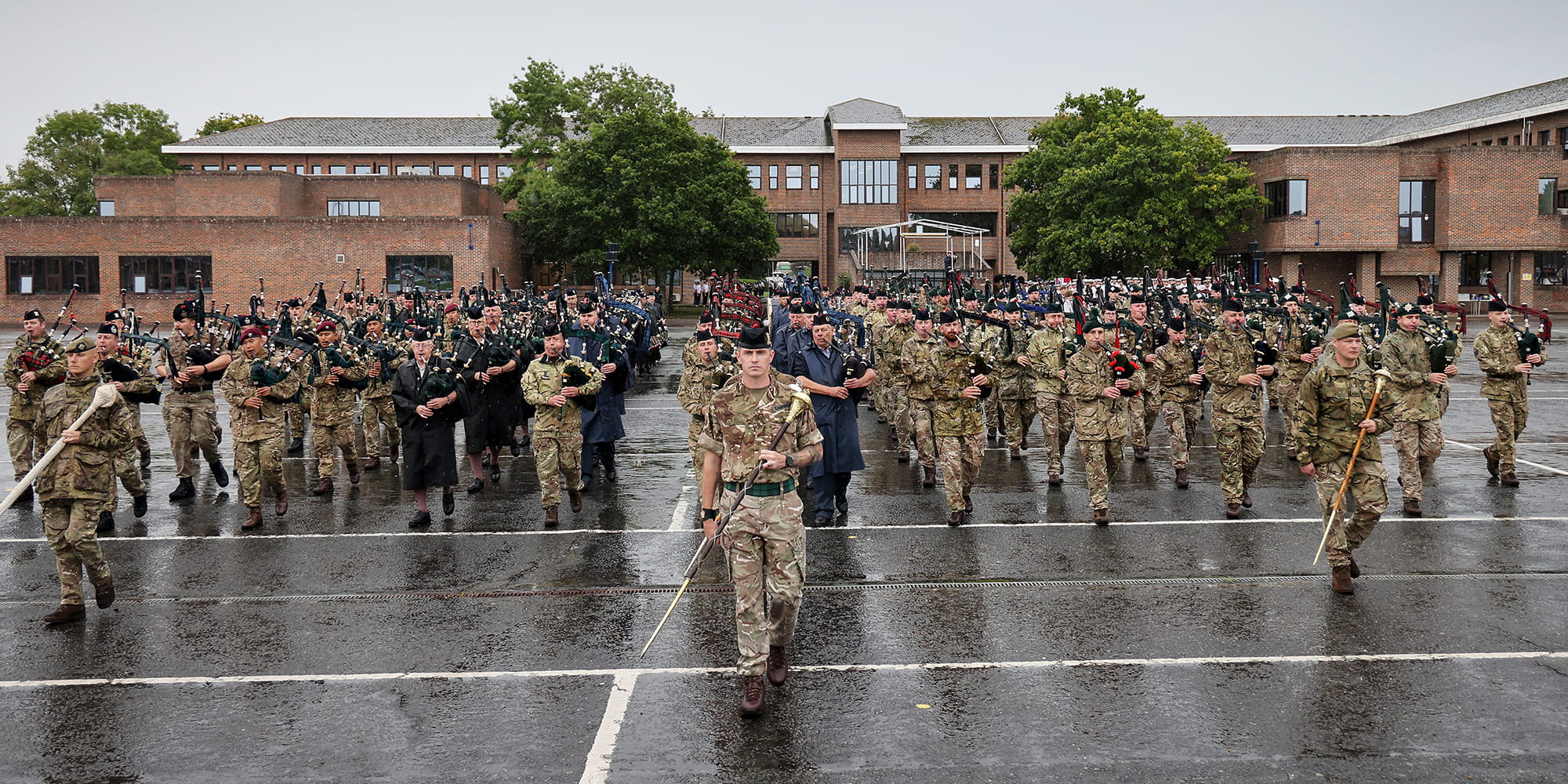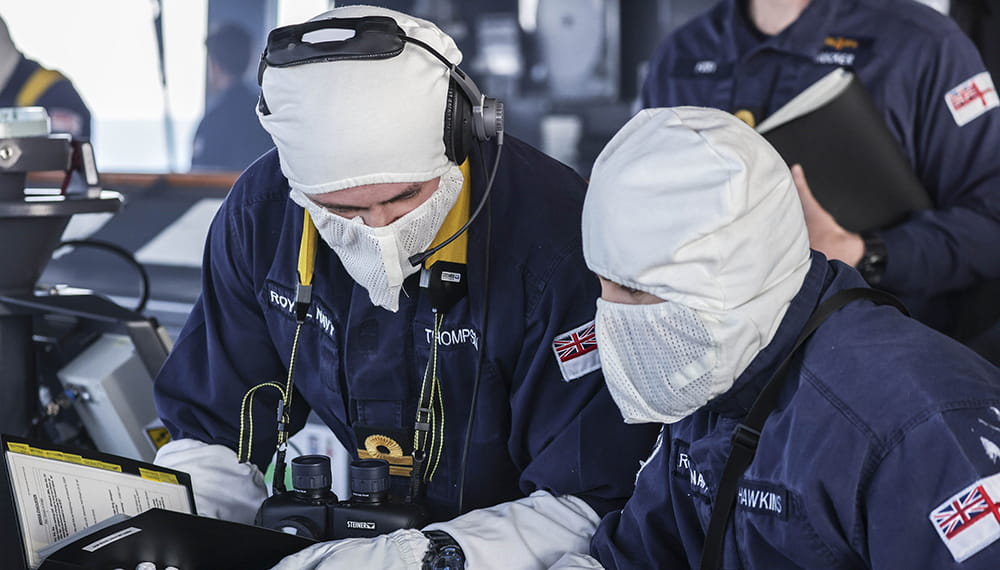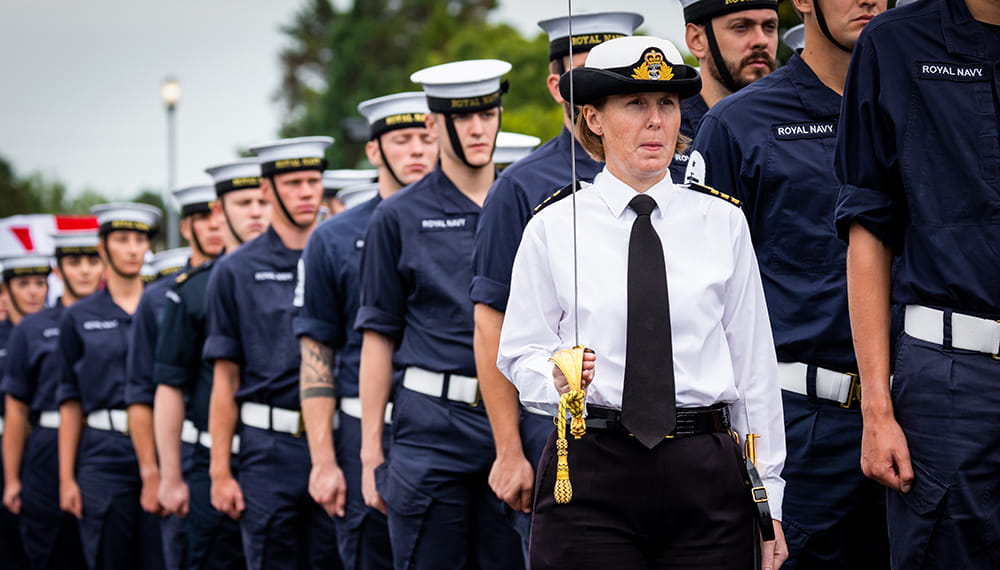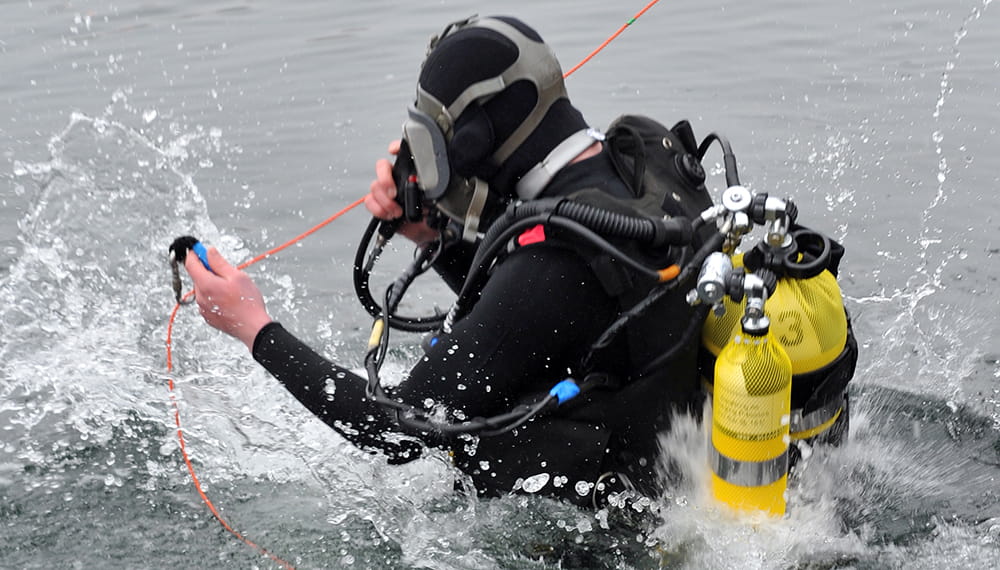Bases and stations
HMS Collingwood
HMS Collingwood is a prestigious training establishment of the Royal Navy. As the largest training base, it serves as the headquarters for the Maritime Warfare School and Surface Stream.

Role of the base
HMS Collingwood is an important training facility for the Royal Navy and its main role is to take care of trainees during stages 2 and 3 of their Warfare and Weapon Engineer training. The base also manages facilities and provides support to other organisations, including the Royal Navy Leadership Academy, Maritime Warfare Centre, and Fleet Intelligence Centre. HMS Collingwood is dedicated to ensuring the well-being of trainees and supporting the Navy’s training and operational needs.
Training Schools
The Collingwood curriculum is packed with courses to cover all aspects of Naval life

Maritime warfare school
HMS Collingwood base is home to the Maritime Warfare School (MWS), part of the Flag Officer Sea Training (FOST) organisation. The MWS delivers warfare training across five sites, including Horsea Island, HMS Temeraire, HMS Excellent, HMS Raleigh, and HMS Collingwood. Its mission is to train officers and ratings who are ready to fight and win, covering various aspects of naval operations.

Victory squadron
Victory Squadron focuses on leadership, naval ethos, and professional standards during Phase 2 training. It prepares ratings undergoing Warfare or Weapons Engineering training to join the Front Line. The squadron emphasizes duty of care, core values, academic classes, physical development, and various activities to shape confident and capable personnel.

Defence diving school
The Defence Diving School at HMS Collingwood base provides military diving training for Royal Navy and Army personnel. It offers comprehensive facilities including diving tanks, recompression chambers, engineering facilities, classrooms, and more. Basic and advanced diving training is conducted at various locations, ensuring divers are well-prepared for their roles.
.jpg?h=570&iar=0&w=1000&rev=c7bbafe2eea24fe4814f0fd5daa9c445&hash=41C58CDF94BEC63576CDED463879A65C)
The potential diver assesment
The Potential Diver Assessment (PDA) is designed to test the attitude and aptitude of anyone wanting to undertake military diver training. Under the watchful eye of a Leading Physical Trainer (LPT) and Royal Navy Diving Instructors, the 2.5-day course also tests the participant’s physical fitness and must be successfully passed in order to gain a recommendation to enter the Royal Navy as a Clearance Diver.
Base history
1748-1810
Lord Collingwood, a distinguished naval officer, fought in battles against the French and Spanish navies and took command of the British Fleet after Lord Nelson's death at the Battle of Trafalgar.
1841
The first HMS Collingwood, an 80-gun wooden Man-o-War, was launched in Pembroke.
Late 19th century
The second HMS Collingwood, a twin-screw battleship, was built and became the first battleship to steam at 16 knots.
1908
The third HMS Collingwood, a battleship capable of 21 knots, was launched in Devonport.
1939
The fourth and present HMS Collingwood was commissioned as a new entry training establishment for "hostilities only" ratings of the Seaman Branch. The construction of buildings and facilities began on the marshy land purchased for the base.
1940
HMS Collingwood was commissioned, and training began for batches of approximately 1,000 trainees every three weeks.
1950s
Efforts were made to improve the infrastructure, replacing original huts with new buildings and modern facilities.
1963
A program to replace all original huts with new buildings and facilities commenced.
1966
HRH Princess Margaret opened tall Junior Ratings' Accommodation Blocks, which were later replaced by modern high-quality accommodation for both male and female ratings.
